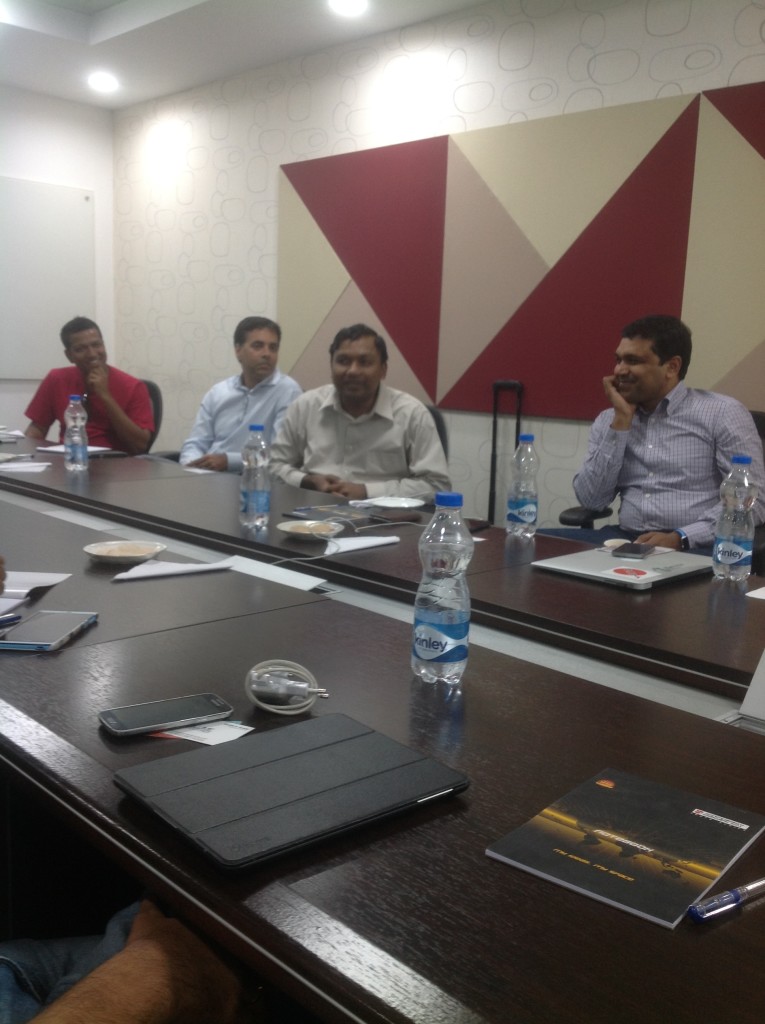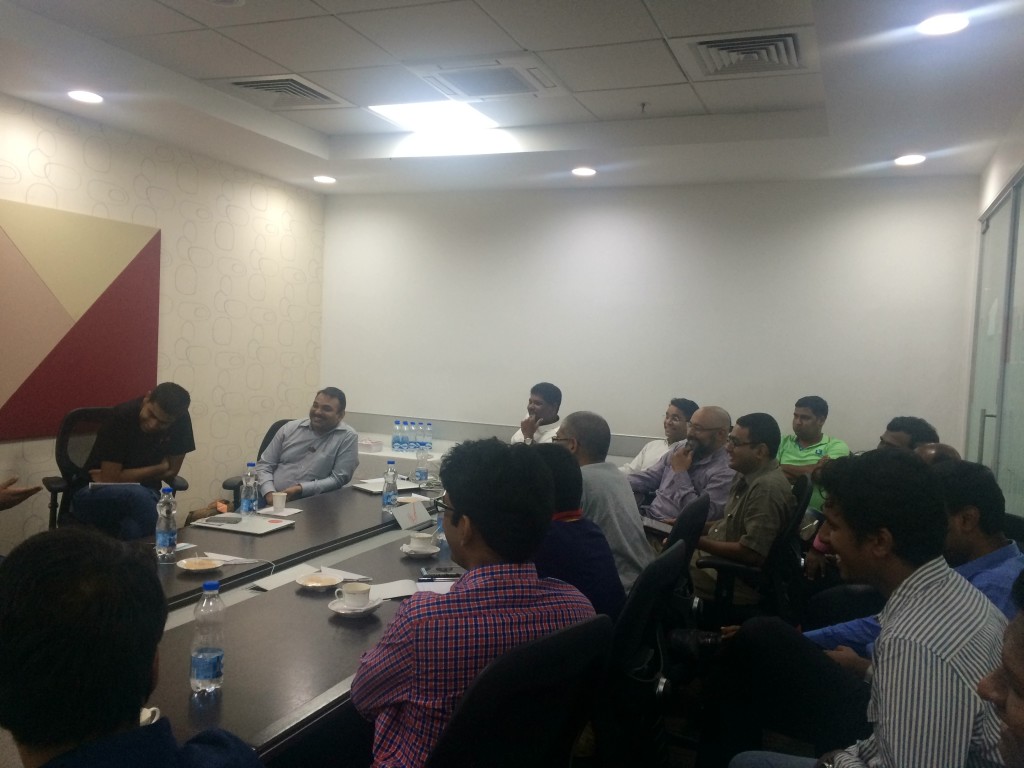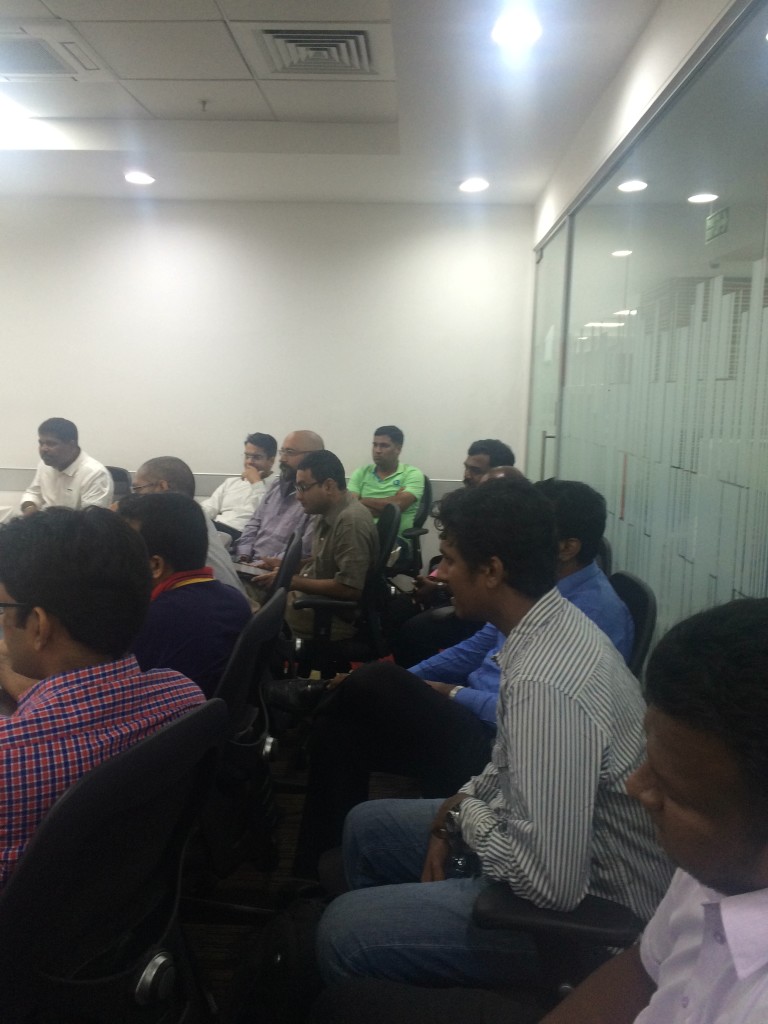The weather in Chennai was finally getting kinder & more pleasant in tune with the time of the year, much like the funding climate which has been less testing on the entrepreneur in general. Depending on whether you ask a consumer product entrepreneur or a B2B SaaS product entrepreneur, the level of optimism could vary, but it’s optimism all around.
As a pre-event runup to SaaSx2, we met at Freshdesk’s office in Chennai, for the Roundtable on “What it takes to fund a SaaS company?”.
Shekhar Kirani from Accel and Karthik Reddy from Blume, joined by Girish Mathrubootham from Freshdesk, anchored the conversations.

Shekhar and Karthik started the round table, with some pretty interesting nuances about what numbers ought to add up, for their investment to make the returns they promised to their limited partners. The conversation touched upon what it takes to get funded at the early stages (upto Series A) and what it takes to be on that path, beyond Series A. Girish chipped in with personal examples of how Freshdesk got funded and his first-hand insight into looking at early stage startups that get funded (or not)!
Here are some bite-sized insights from the conversation that lasted for 3 hours:
On the options for the entrepreneur
- Indian B2B entrepreneurs have bootstrapped their startups remarkably well that it’s not an exception. If you are a B2B entrepreneur bootstrap or do more with less. Wait for the right strategic opportunity to scale. With numbers backing you up, raise for growth.
 On what drives investors’ decisions
On what drives investors’ decisions
- Don’t get discouraged with ‘No’ from a partner of a VC firm. They have their biases and baggages. It’s the partner who has a view and not the firm. Find your champion.
- Most investors don’t like it if the outcome has a cap to it — there’s a maximum that you can do in the market and that sets a pretty hard ceiling to crack. In such cases, you’ve to out-execute everyone else and that’s a hard ploy and makes less exciting for the investor. Example: Would you start another CRM company now and if so why would you do what the rest of the 1600 have not done. Even if you execute well, what market share can you capture?
- VC firms pitch to Limited Partners (wealthy individuals, family offices, pension funds etc.) more than startups do to investors. They’ve the same issue of having to convince an LP that a certain startup that’s pre-revenue will get an exit worth $100M in 7 years. To do that in India, when there was no such exit till recently, made it even less credible.
- Most funds last for 10 years. 3 years to invest and 7 years to grow and nurture those investments towards exit events.
- Among the top quartile or decile of startups in a portfolio, one company returns the entire fund. Top 5 companies return 90% of the capital.
- Each startup has to be a prospect for a $500M exit, for the fund to meet its “Return on Capital Employed” goals.
On what investors look for in a startup?
- In a SaaS startup, front loaded costs are high. So your first two rounds are not about revenue or profitability but more about Product-Market fit and elimination of business model risks.
- Integrity, smartness and hard working ethics of the team are important but not sufficient. There has to be a potential for $500M exit for that startup for investors’ math to work. Anything less is already a sub-par outcome.
- It’s the job of the entrepreneur to make the VC look and realize how big the market is. They see a 1000 pitches a month and carry stereotypes. Help them make the context switch.
- Integrity cannot be stressed enough — Questions about India’s professional ethics do come up.). Indian LPs too find it hard to fathom that it’s possible to legally generate a 25x outcome from a startup, given where they come from and what they’ve seen.
 On how to negotiate investment terms
On how to negotiate investment terms
- Clauses are there to protect the downsides for an investor. If you understand why they are there it’s easy to have a conversation around them.
- Most dissonance that an entrepreneur feels is because s/he does not understand the responsibilities the investor has to his/her fund and their LPs.
- Clauses such as liquidation preferences are there to protect the downside of the investments. So long as you cover the down-sides as an entrepreneur, your negotiation leverage for not carrying over these clauses to subsequent rounds is high — Don’t get it yet? Ask entrepreneurs who’ve raised several rounds, on how to negotiate.
- Drag along clause is there so that an investor can get the fund its returns as the fund comes to the end of life. If that goal conflicts with your startup’s, look for funds that are early in their life, to take money from and thereby give yourself a better runway.
- Everything is negotiable if your numbers are good. All downside protections kick in only during the bad times. So the best way to stay on top of the negotiations is to execute well.
Contributed by Ashwin Ramasamy, ContractIQ

